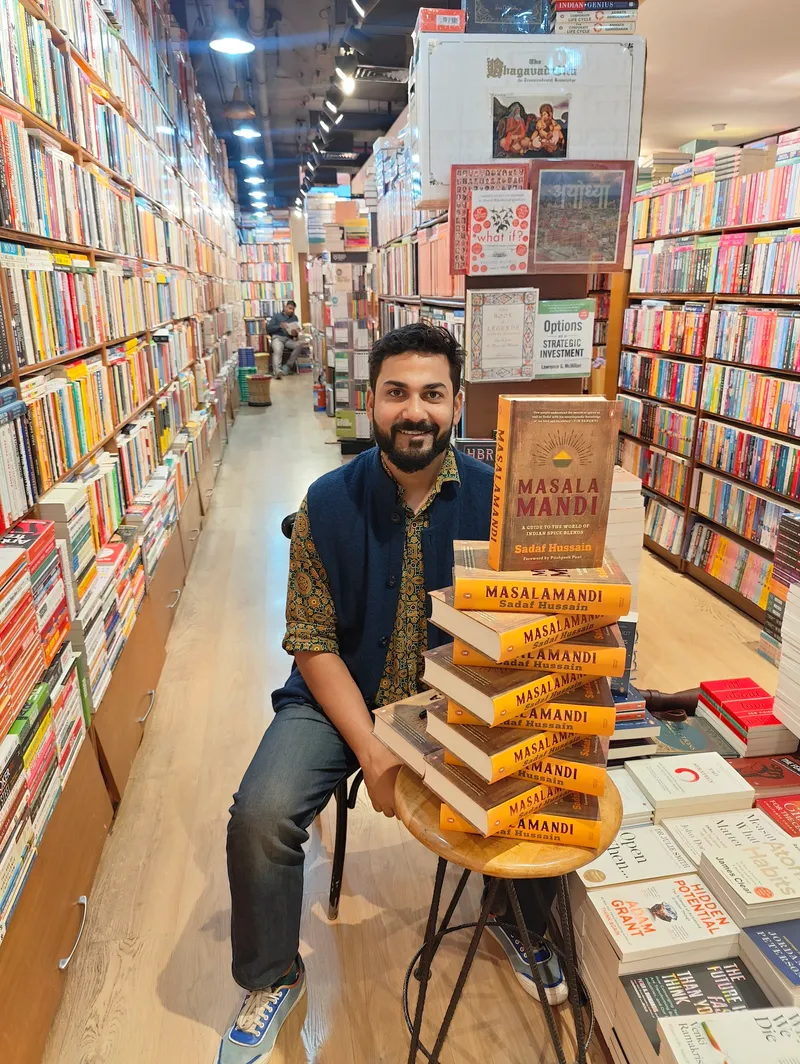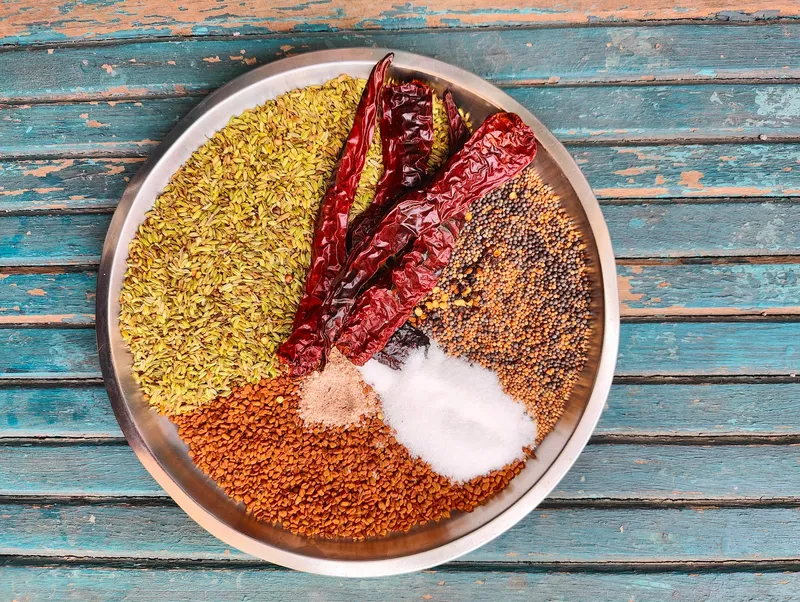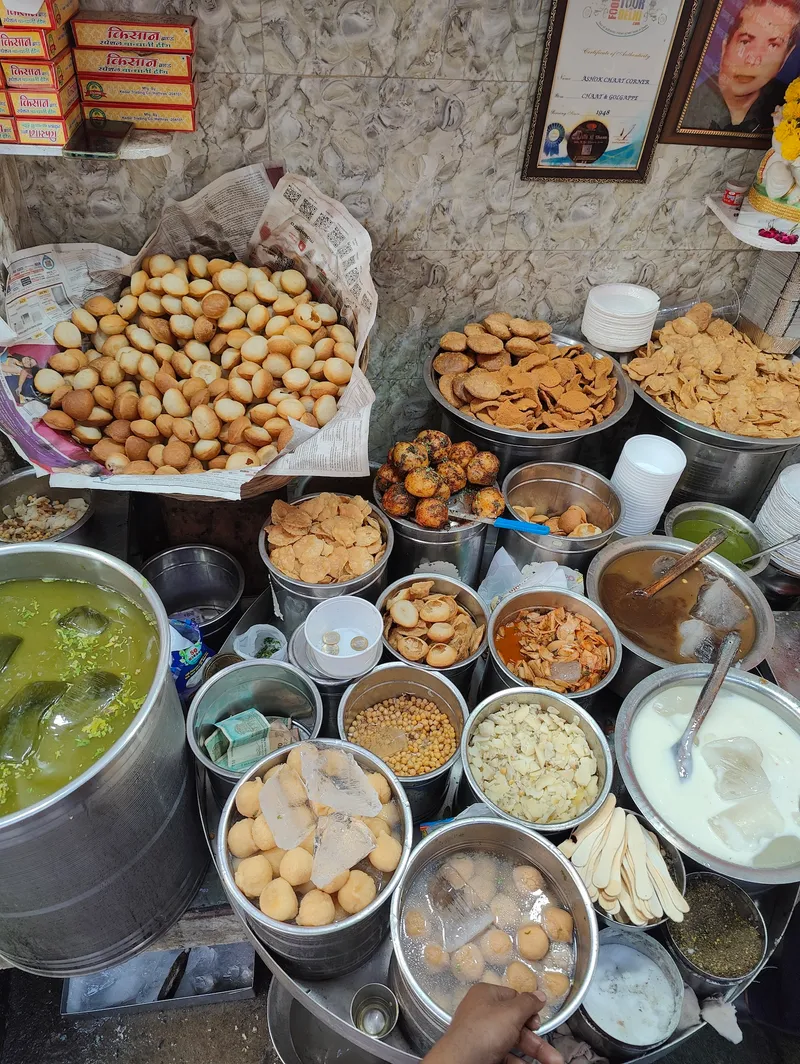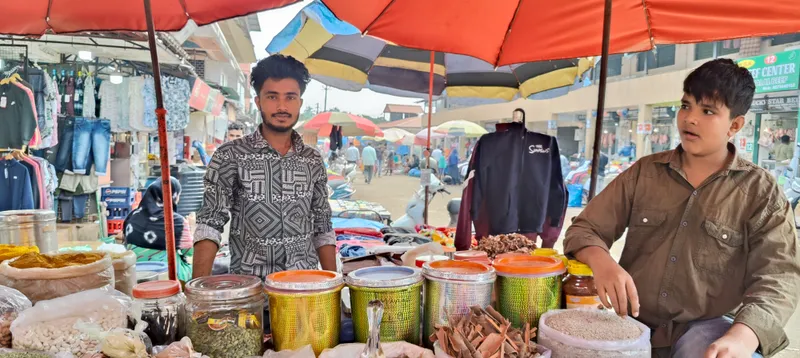With 480 spice blends, Sadaf Hussain's Masalamandi introduces readers with an often-neglected world
Author, chef, and food writer Sadaf Hussain's Masalamandi is a unique cookbook on the fascinating world of spice blends in Indian kitchens.
In the introduction to Masalamandi: A Guide to The World of Indian Spice Blends, author-chef-food writer Sadaf Hussain calls spices the rooh (or soul) of any dish.
It's certainly food for thought, with most of us loosely commenting on the taste of a dish without trying to understand the masalas that went into it.
“If your father or mother is cooking, it's easy to say you liked the food without focusing on the spices. Even when we like chaat from a particular shop, we may say we enjoyed it but never ask what the chaat masala was,” he tells YS Life.
Before Hussain dives into individual dishes and the spice blends in his book, his readers can access a ready reckoner of essential spices in the kitchen. Ajwain, aniseed, asafoetida, Indian bay leaf, black and green cardamom, chillies, cinnamon and cassia, and clove feature on the list, among many others.

Author-chef-food writer Sadaf Hussain with his book Masalamandi: A Guide to The World of Indian Spice Blends
The idea of Masalamandi is for people to learn and immerse themselves in the fascinating world of spices, eventually triggering enough curiosity to experiment with it.
Calling himself a “food romancer”, Hussain’s strongest weapon is his ability to weave an informative narrative, yet not preachy.
“I would call this book adhoora or half-baked. It doesn't have the recipe for any dish but tells you all about spices. My writing has always been to spotlight things we don't often value. There are subtle anecdotes, but I want people to observe and absorb,” he says.
Preserving culinary heritage
While most books about food are dedicated to the family’s matriarchs, their names are hardly mentioned upfront. In Hussain’s book, his mother Anjum, grandmother Bilqis, and the family’s sil batta (mortar and pestle) share equal credit.
“I grew up in Jharkhand, where the house help would come and make the masalas on a sil batta. We had a mixer at home, but there was no electricity. However, in the 90s, everyone used the kitchen tool. Now, it's a luxury,” he adds.

Spices of India
Hussain's nani would order whole spices, always avoiding the powdered varieties. Under her supervision, the house help would be given onion, green chilli, garlic, and spices to create a paste.
“As a child, we began associating the aroma of dishes with spices. For instance, there was the earthiness of the kebab masala during Bakri Eid. That's how I began understanding spices better, and now I want to make people more aware of these things,” he adds.
There's much commercialisation now, but Hussain is mindful about not romanticising making fresh spices at home every day. While males may speak about “maa ke haath ka khana” or “chulhe ki roti”, if the same question is asked to a female, she knows the labour behind it.
“The times were different earlier. The women of the family would sit for hours, chatting away and making something or the other. There was no TV or anything else and so much time in hand.”
A deep dive into spice blends
A quick glance through Masalamandi tells you about the enormous variety of spice blends for dishes like biryani, chole, rajma, and curry masala—most of which we aren't even privy to!
There's also chaat masala or garam masala, which for most, may be an overarching term, but each region and household has its version.

Chats of India
“Say Kanpur has something called buknu chaat masala, which also received a GI tag. There's also a chaat masala from Bihar, which is made with ber (berries). The idea of chaat masala is to enhance the flavour of food, also helping people digest it,” shares Hussain.
He adds, “I wanted people to understand that with 20 kinds of whole spices, there are so many permutations and combinations one could try.”
Hussain, while researching different spice markets across India, realised the absence of knowledge among many shopkeepers. Some, of course, had a wealth of information.
“Just a week ago, I was in Khari Baoli in old Delhi with a bunch of people. I came across a spice blend called nau bahar. When I asked the shopkeeper about its use, he told me that halwais (sweet shops) ask for it. But he had no clue what they use it for,” shares the author.
His experience was surprisingly different in Goa’s Mapusa market. Based on several recommendations, he was on the hunt for a shopkeeper, Aladdin, who sourced good quality spices.

Spices in Goa's Mapusa Market
“I was expecting a massive shop, but it was a small cart. When I told him I was writing the book, and he understood that I was not faking it, he began opening up and telling me how a masala used in Goa is sold as garam masala to travellers,” recalls Hussain.
“We discussed many more things. He showed me one masala that was red in colour but not as spicy. He knew everything about spices with the same passion that I was looking for,” he adds.
However, something that still amuses Hussain is people's use of the term ‘secret spice blends’. “Nothing like this exists. Basically, it's a combination of existing masalas mixed with a lot of salt,” he highlights.
A note to his readers
With Masalamandi, Hussain wants his readers to have certain takeaways. His foremost attempt is to help them understand and value the role of spices in their food.
“I also want them not to follow a recipe. My idea is you take the qorma masala, and you make a sabzi with that. Don't restrict yourself. I want people to go nuts. They can even use kebab masala in biryani or pulao,” he suggests.
The book must be the guiding light, says Hussain, but the proportions must be “andaze se” (estimate). “I want people to experiment as much as possible. Pick up the book, keep it in the kitchen, and let haldi and jeera stain it. In this case, daag acche hai (stains are good).”
Edited by Suman Singh







